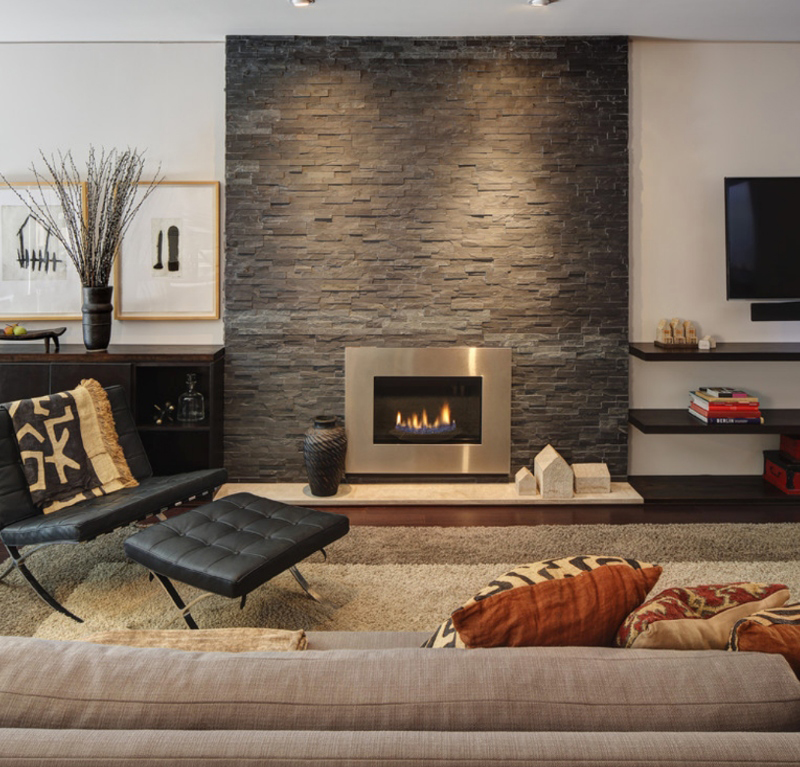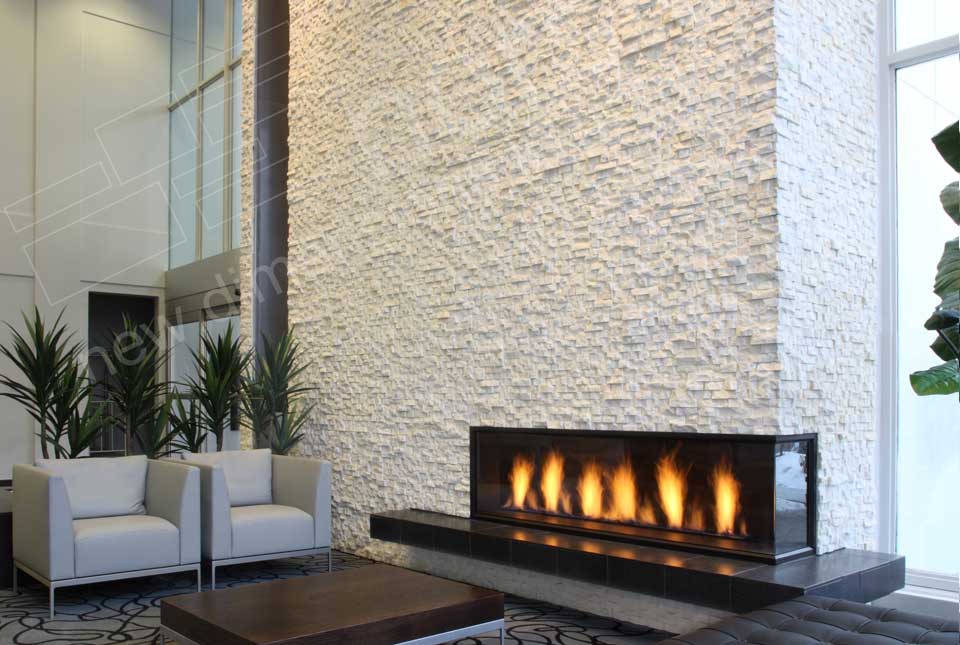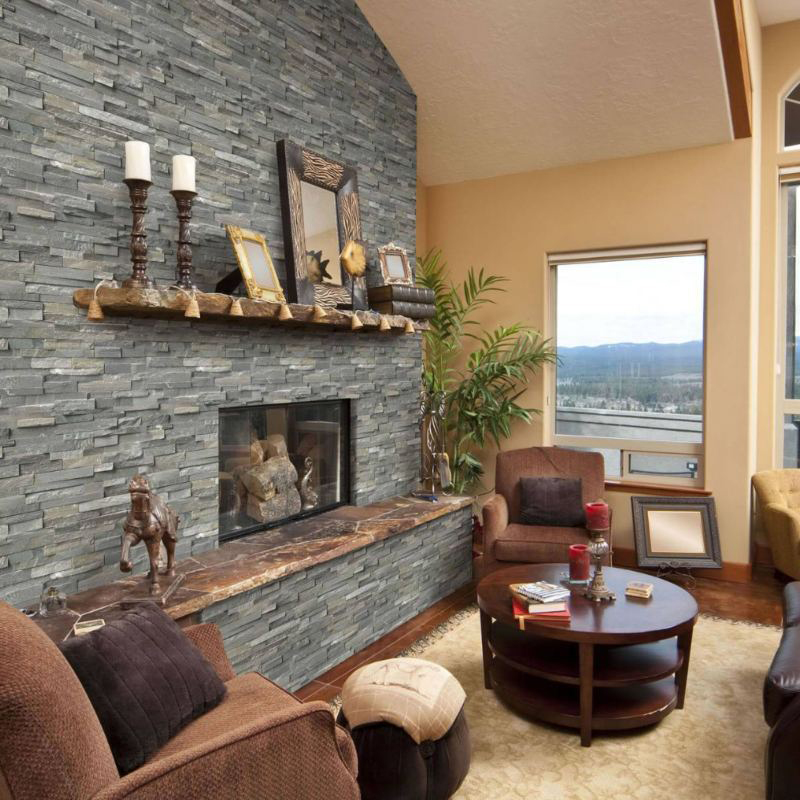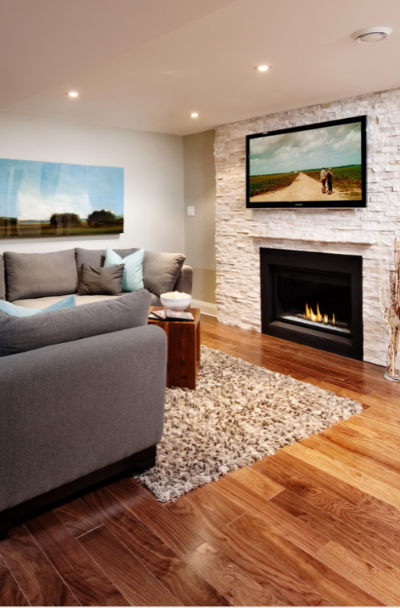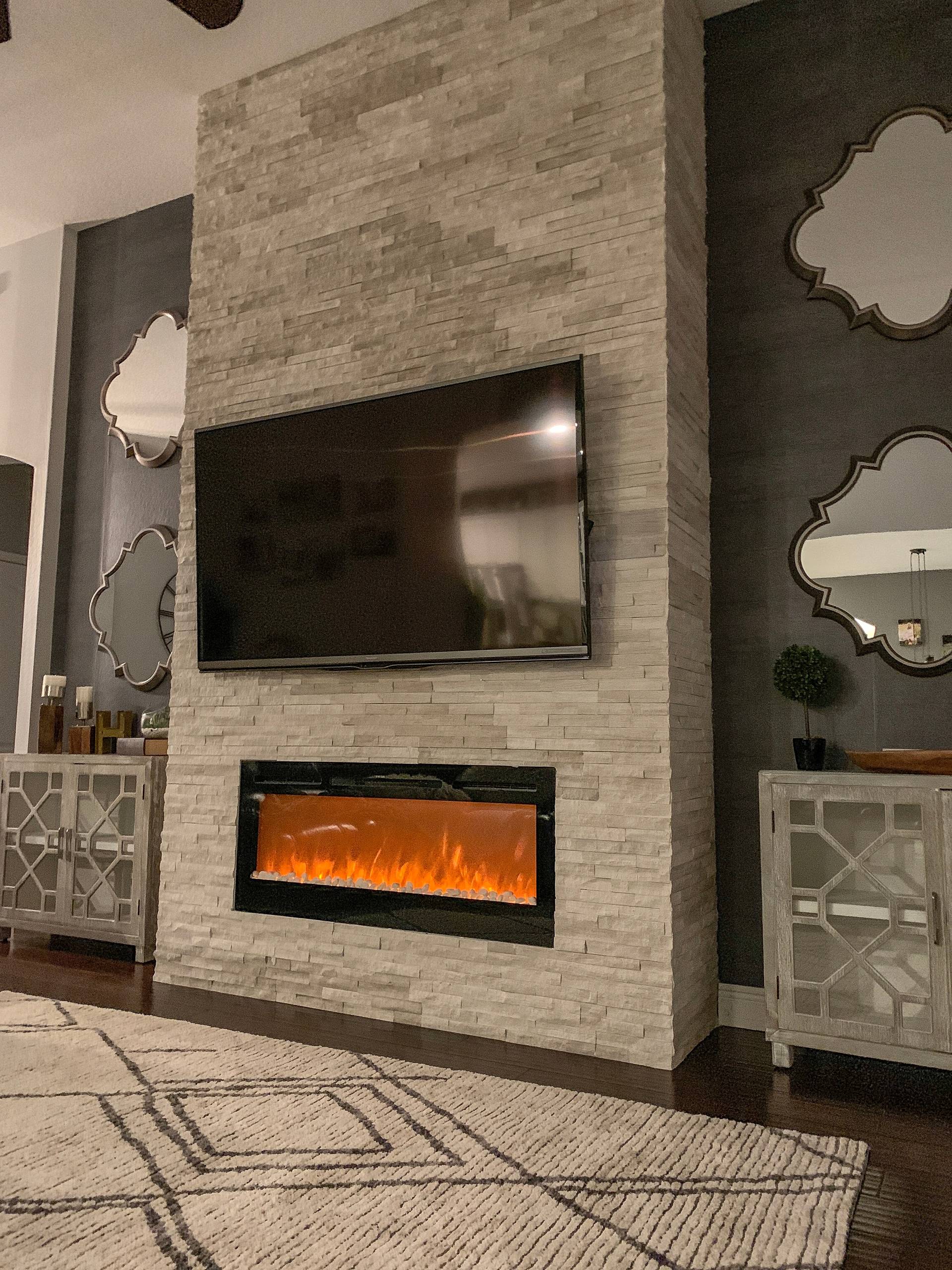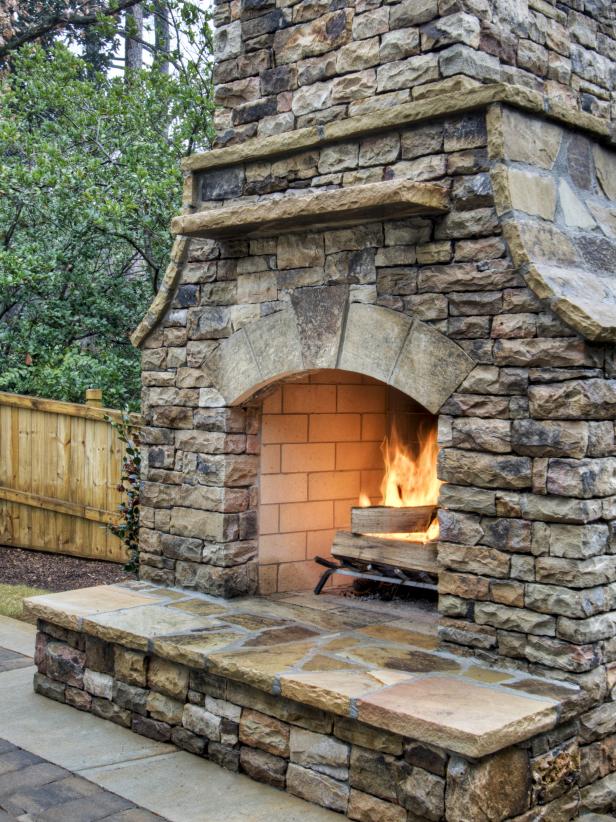A natural stacked stone fireplace brings organic beauty and timeless appeal to any living space. Unlike manufactured stone veneers, these fireplaces use real, irregularly shaped stones stacked without mortar for a rugged, authentic look. The unique textures and earthy tones create a warm focal point that complements both rustic and contemporary interiors. Whether you’re building new or renovating, a stacked stone fireplace adds character and value to your home. Below, we explore six key aspects to consider when planning your perfect natural stone fireplace.
Choosing the Right Stone for Your Stacked Fireplace
The type of stone you select determines the overall look and durability of your fireplace. Fieldstone is my top recommendation for its varied shapes and natural weathering, perfect for a cottage or cabin vibe. Limestone offers a softer appearance with more uniform coloring, while granite provides dramatic speckles and superior heat resistance. I always advise clients to source local stone when possible—it’s more sustainable and blends better with regional architecture.
Color plays a big role in the fireplace’s impact. Warm-toned sandstone creates a cozy atmosphere, while cool slate grays lend a modern edge. Mixed stone varieties with quartz veins or mineral deposits add visual interest. Visit stone yards to see full palettes before deciding. Keep in mind that some stones darken when wet or change slightly with heat exposure, which can enhance their natural character over time.
Size variation is crucial for achieving that authentic stacked look. Aim for a mix of large anchor stones (12-18 inches) and smaller filler pieces. Irregular shapes interlock better than uniform ones, creating structural stability. I typically avoid stones thinner than 2 inches as they can crack under heat. A good mason will sort stones by size and shape before installation to ensure proper balance and visual flow.
Dry-Stack vs Mortared Construction Methods
Dry-stacking stones without mortar creates the most organic, traditional appearance—the method used in ancient stone buildings that still stand today. This technique relies entirely on careful stone selection and placement. The gaps between stones allow for natural expansion and drainage, making it ideal for homes in freeze-thaw climates. However, dry-stack requires an experienced mason; improper stacking can lead to shifting or collapse over time.
Mortared construction provides added stability for taller fireplace designs or seismic zones. A skilled mason can apply mortar discreetly in the back joints while maintaining the appearance of dry-stacking from the front. I often use this hybrid approach for fireplaces reaching ceiling height. The mortar should match the stone color—a gray mortar for cool-toned stone, tan for warmer hues. Avoid over-mortaring, as visible mortar lines diminish the natural look.
Structural considerations differ between methods. Dry-stack fireplaces need a wider base (at least 16 inches thick) for stability, tapering slightly as they rise. Mortared designs can be built thinner but require proper footings. Both types benefit from a steel lintel above the firebox opening. I always include a non-combustible backer board behind the stone for added fire protection, regardless of the stacking method chosen.
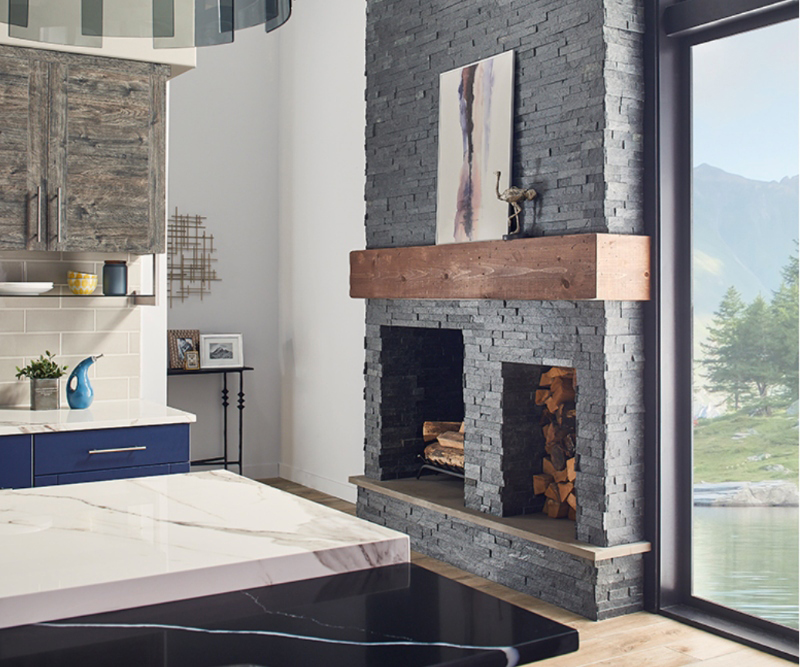
Designing the Firebox for Function and Safety
The firebox is the working heart of your stacked stone fireplace. For wood-burning units, I specify refractory firebrick lining—it withstands extreme heat better than regular brick or stone. The firebox should be proportionally smaller than the overall fireplace face; too large an opening can make the stone surround appear undersized. Standard residential fireboxes range from 24-36 inches wide, with heights about 3/4 of the width.
Clearance requirements affect your design choices. Combustible materials (like wood mantels) need at least 12 inches clearance from the firebox opening. Stone itself is non-combustible, but the mass absorbs and radiates heat differently than thin veneers. I always include a raised hearth at least 16 inches deep—not just for safety, but as a visual anchor that grounds the fireplace design.
Gas inserts offer flexibility in firebox design. You can opt for a shallower depth since no wood storage is needed. Linear gas burners work particularly well with stacked stone, creating a modern contrast between the rustic stone and sleek flames. Whatever fuel type you choose, have a professional assess your ventilation needs—even natural stone fireplaces require proper drafting for safe operation.
Incorporating Architectural Details
A stacked stone fireplace becomes truly special when personalized with thoughtful details. Wood beams make excellent mantels, their organic texture complementing the stone. For a more polished look, try a thick slab of honed limestone or slate. I recently designed one with a reclaimed barn wood mantel that had visible wormholes—it added wonderful character.
Built-in niches or shelves flanking the fireplace increase functionality. These can be constructed from matching stone or contrasting materials like floating wood shelves. Consider asymmetrical placement for a more contemporary feel. Lighting is another key detail—recessed uplights graze the stone’s texture, while sconces provide ambient glow. I often install dimmable LED tape lights along the mantel for adjustable ambiance.
The transition between stone and wall matters. A clean edge works for modern spaces, while a “disappearing” irregular edge suits rustic designs. For rooms with high ceilings, carry the stone up to the ceiling or add a stone-clad chimney breast. These vertical elements draw the eye upward, making the fireplace an even more dramatic focal point.
Maintenance and Long-Term Care
Natural stone requires surprisingly little maintenance if installed properly. Dust accumulation in the crevices is normal—I use a soft brush attachment on a vacuum cleaner quarterly. For deeper cleaning, a damp cloth with mild soap works; avoid acidic cleaners that can etch some stones. Annual inspections should check for any loose stones, especially in dry-stack designs where settling may occur.
Mortar joints may need repointing every 5-10 years depending on humidity and use. Use a color-matched mortar for repairs—I keep leftover mortar from the original installation for this purpose. In wood-burning fireplaces, creosote buildup on the stone above the opening is common. A poultice of baking soda and water can lift these stains without damaging the stone’s surface.
Protect your stone during renovations by covering it with moving blankets. While natural stone is durable, sharp tools can chip edges. I advise clients to embrace the natural patina that develops—minor chips or color variations add to the fireplace’s authentic character. Unlike perfect veneers, these imperfections tell your home’s story.
Blending with Different Interior Styles
Stacked stone fireplaces adapt beautifully to various design aesthetics. In rustic cabins, pair them with exposed ceiling beams and leather furniture. The key is keeping other textures simple—let the stone be the star. I recently designed one where we whitewashed the stone lightly to brighten a dark room while preserving its texture.
Modern interiors benefit from contrasting the organic stone with sleek materials. Try a stacked stone fireplace with a steel mantel or flanked by glossy black cabinetry. For transitional spaces, combine the stone with shiplap or board-and-batten walls. The mix of natural and man-made materials creates visual interest without clashing.
Traditional homes can incorporate stacked stone with classic millwork. Picture wainscoting below the stone, or symmetrical bookcases on either side. I often use a more uniform stone pattern in these settings—still stacked, but with less extreme size variation. The fireplace becomes a refined version of its rustic cousin, bridging old and new design languages.
How much does a stacked stone fireplace cost compared to other types?
Natural stacked stone fireplaces typically cost more than manufactured veneers but less than premium marble or intricate masonry work. Expect to invest 3,000−8,000 for a professional installation, depending on size and stone type. Dry-stack methods often cost more due to the skilled labor required. While pricier upfront than basic options, the timeless appeal and durability make it a worthwhile investment that can last generations with proper care.
Can stacked stone be used for an outdoor fireplace?
Absolutely! Stacked stone is ideal for outdoor use—its natural drainage properties and weather resistance outperform many other materials. I recommend choosing frost-resistant stones like granite or dense limestone for climates with freezing winters. Outdoor installations should have proper footings below the frost line and may benefit from a clear sealant to minimize water absorption while maintaining the stone’s natural look.
Is stacked stone safe for wood-burning fireplaces?
Yes, when installed correctly. The stone itself is non-combustible, but proper clearances must be maintained around the firebox opening. I always use refractory firebrick lining and install a non-combustible backer board behind the stone. The mass of natural stone actually helps regulate heat dispersion. Have a professional inspect your design to ensure local building codes are met, especially regarding spark protection and chimney requirements.
How do I clean a natural stacked stone fireplace?
Regular dusting with a soft brush keeps most stacked stone looking great. For soot stains above a wood-burning firebox, make a paste of baking soda and water, apply it to the stain, cover with plastic wrap overnight, then gently scrub off. Avoid harsh chemicals or pressure washers, which can damage the stone’s surface or erode mortar. For stubborn stains, consult a stone care specialist—I’ve seen DIY attempts permanently darken porous stones.
Can I add a stacked stone facade to my existing fireplace?
In most cases, yes! Existing brick or plain surrounds can be covered with stacked stone, provided the structure can support the additional weight. We first install metal lath over the existing surface, then apply a scratch coat before setting the stones. The key is ensuring proper clearances around the firebox remain intact. I’ve transformed many outdated fireplaces this way—the depth and texture of real stone completely changes the room’s character.
Does stacked stone work in small rooms?
It can, with careful design. In compact spaces, I use smaller stones (4-8 inch range) and limit the stone to just the fireplace surround rather than carrying it up to the ceiling. Lighter-colored stones like buff limestone help prevent the feature from overwhelming the room. Pairing it with a slim-profile mantel and keeping surrounding walls light keeps the space feeling open. The right proportions make even a petite stacked stone fireplace feel intentional, not cramped.
How to Create the Stacked Stone Fireplace Look on a Budget
Stacked Stone Fireplace
How to Build an Outdoor Stacked Stone Fireplace
Related Posts:
